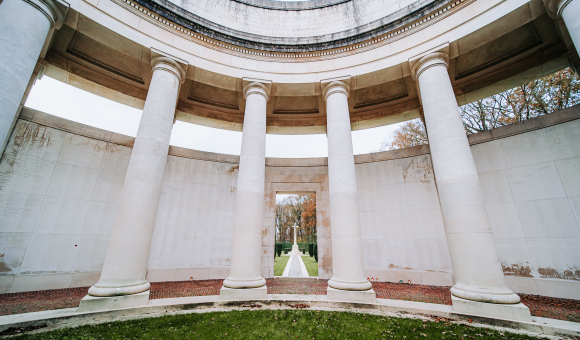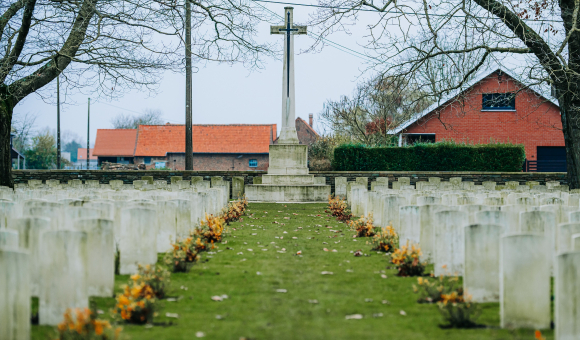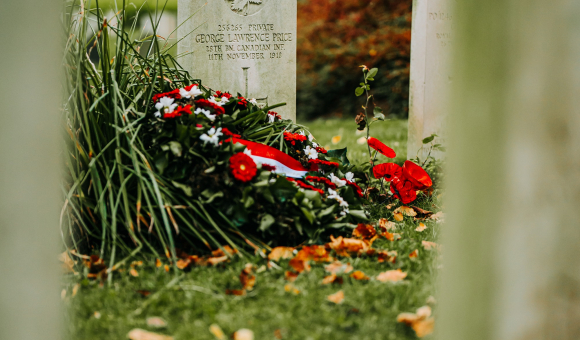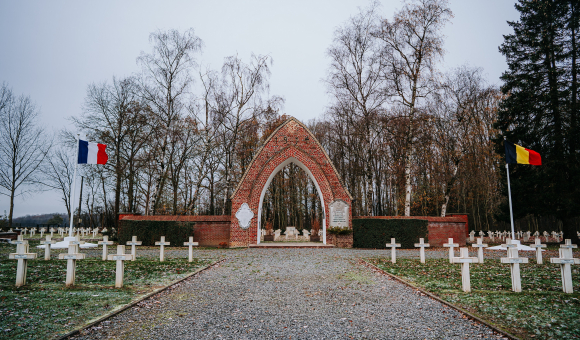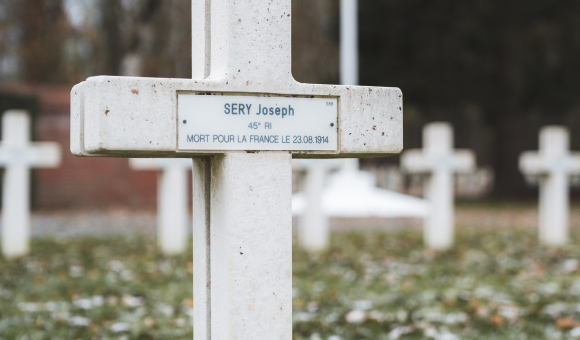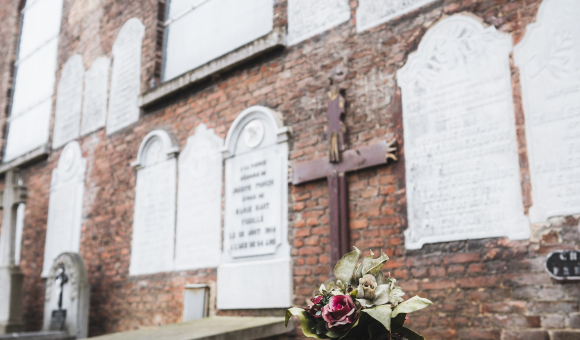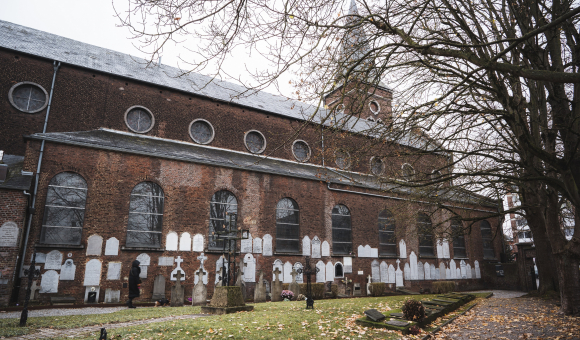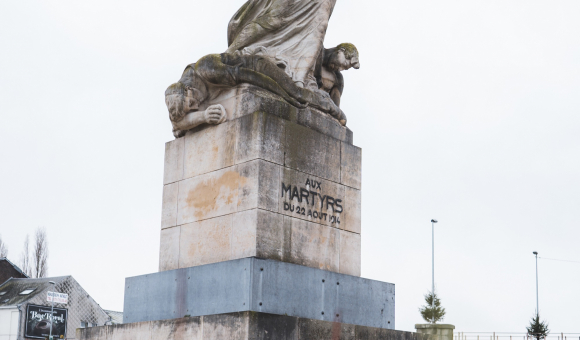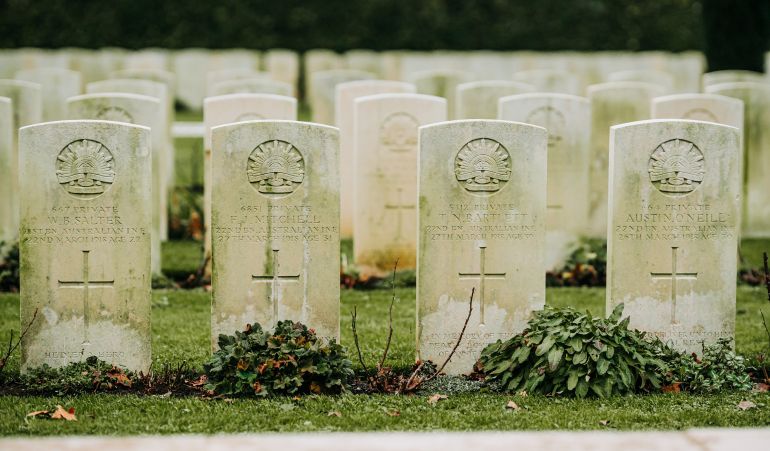
There are places in Wallonia that are well worth a visit. For the story they tell, but also because we mustn’t let anything fall into oblivion. And as proof of their importance to humanity, they are now listed as UNESCO World Heritage sites. A guided tour of the sites.
More than a century after the 1914-1918 conflict, there are still places in Belgium where you can still feel the courage of those who gave everything to fight the enemy. To get an idea, a tour is a must. And as it will pass through several provinces, it’s best to plan ahead. Wallonia has sixteen funerary and memorial sites of exceptional educational value. It’s something to be proud of and feel reassured about. UNESCO recognition also ensures that the legacy will live on. The purpose of these cemeteries is not just to pay tribute to the soldiers who died. They are also a reminder of the importance of peace in today’s troubled times.
First stop: Hainaut. This province has the largest number of First World War sites. Ten in all. To begin with, we head for Comines-Warneton, home to a number of important sites, and with good reason: the front line was very close by... What makes this area special is that there are several small Commonwealth war cemeteries: Hyde Park Corner (1), created in 1915, and on the other side of the road, Berks Cemetery Extension (2), with its 876 headstones. To get there, you have to pass two lion-shaped statues. And these are not the only beautiful structures: there is also the monument to the missing, a magnificent rotunda in the form of columns listing the names of the 11,447 servicemen who remain anonymous with no tomb. Also in Comines-Warneton is Rifle House Cemetery (3) in Ploegsteert Wood. Designed by Cowlishaw, it has 228 headstones. The first were installed in early November 1914, the last in June 1916. All are personalised with the soldier’s first and last name, service number, regiment, religion, age and date of death. A few metres away, you can also pay your respects at the Strand (4), a T-shaped site containing 1,151 graves, 1,143 of which date from the First World War. They include British soldiers, Canadians, New Zealanders, Australians, a German and a South African. Still in the woods, we have Toronto Avenue (5) which, as its name does not suggest, contains only Australian soldiers, 78 in all. And then there’s Ploegsteert Wood (6), a site made all the more unique by the fact that it brings together several nearby cemeteries, even though the Commonwealth War Cemeteries Commission does not normally authorise the removal or exhumation of bodies. Ploegsteert Wood is small: just 164 graves, including that of Robert Barnett, killed in 1917 at the age of 15, making him one of the youngest British soldiers to die in battle. Another place of interest is Prowse Point (7), with its 225 Commonwealth graves and four double German graves. This cemetery, located near the memorials to the 1914 Christmas truce, was used for the four years of the conflict. It has nothing in common with Mud Corner (8) at the bottom of this slope, opposite Ploegsteert Wood, which was only in use from June to December 1917. Here, the Cross of Sacrifice rests on an octagonal base and features a bronze sword, the symbol of the weapon of heroes, knights and Saint George who slayed the dragon. Finishing in Hainaut, there are two more sites not to be missed. In Mons is the German-Commonwealth Military Cemetery of Saint-Symphorien (9). Although the name is very long and not easy to remember, the place is nonetheless surprising to discover. Its history and layout are unique. At the time, the owner of the land had set one condition for its sale: that it would accommodate graves from both sides. As a result, there are 229 Commonwealth graves and 284 German graves. Another special feature is that the site is spread over several levels, all linked by stairs and tree-lined paths. The setting is bucolic and also has symbolic value. Saint-Symphorien Cemetery is the final resting place of the first and last Commonwealth dead, as well as holders of the first Victoria Cross (the highest military award of the British and Commonwealth armies) and the first Iron Cross (a German military war decoration). Finally, at Aiseau-Presles, near Sambreville, there is the Belle-Motte French Military Cemetery (10), the largest of its kind in Belgium. Created by the Germans in 1917, it has the particularity of housing the Verdun urn, a souvenir of the exchange of soil organised in 1994 between this site and the Douaumont Necropolis.
In the province of Namur, you have to go to Tamines. There, during the Battle of the Sambre, the 364 inhabitants shot on 22 August 1914 by German troops are honoured. The cemetery built around the church, a few metres from the massacre, is home to their remains. Its name? The Enclos des Fusillés (11). A highly charged place.
Another province to visit for its history of heroic resistance: Liège. The fiery city was the first foreign town to receive the Légion d’Honneur from the French Republic. Something to make those who remember proud. And there are two not-to-be-missed places to pay your respects: the Robermont Cemetery (12), where Belgian, French, Italian and German soldiers are buried. Then there is Loncin Fort (13), which remains just as the attackers discovered it after the explosion on 15 August 1914. A tragic day for its defenders: around 350 men lost their lives there.
Finally, there is the province of Luxembourg, where three military cemeteries are well worth a visit. All are in Tintigny. The story they tell? The particularly deadly day of 22 August 1914. 27,000 French soldiers died, 7,000 of them in Tintigny alone. But the L’Orée de la Forêt Cemetery (14) is only home to 2,500 of them. And unfortunately, only 121 have been identified. This is the case of the writer Ernest Psichari, most of whose works are autobiographical. Another important site for history buffs is the 1914 military cemetery, known as ‘du Plateau’ (15). It was set up at the same time as L’Orée de la Forêt, again by the Germans.
Situated in the middle of the woods, when it was created it held 887 bodies, including 738 French, mainly from the 1st Colonial Infantry Regiment. Today, only a few hundred remain, many having been repatriated to their home villages... Finally, there is the Franco-German Cemetery at Le Radan (16). Built in 1917, 527 French and 298 German soldiers from various battles in the region are laid to rest there. In the centre, a magnificent obelisk bears the following inscription: “Honouring the brave who gave their lives for their country”.
By Nadia Salmi
This article was originally published in Revue W+B no. 162..
